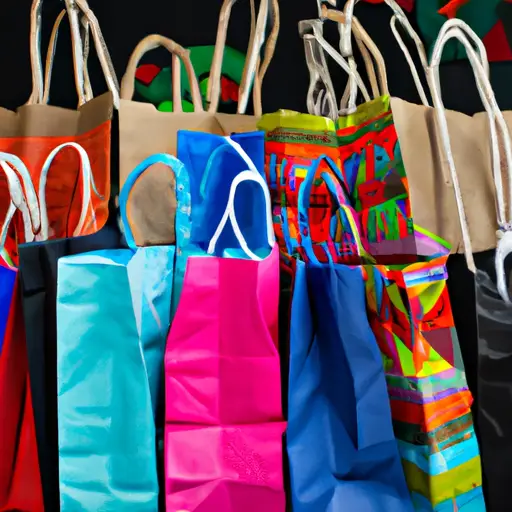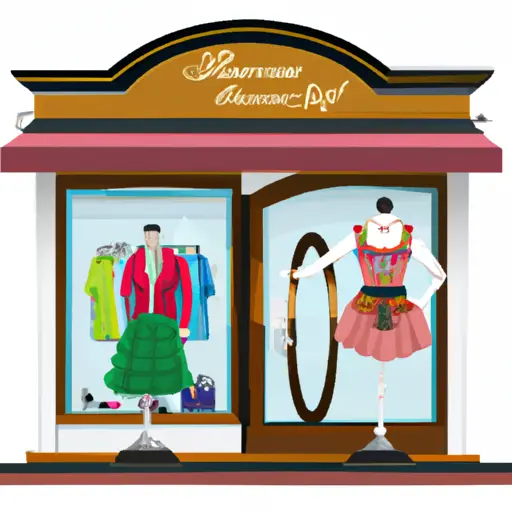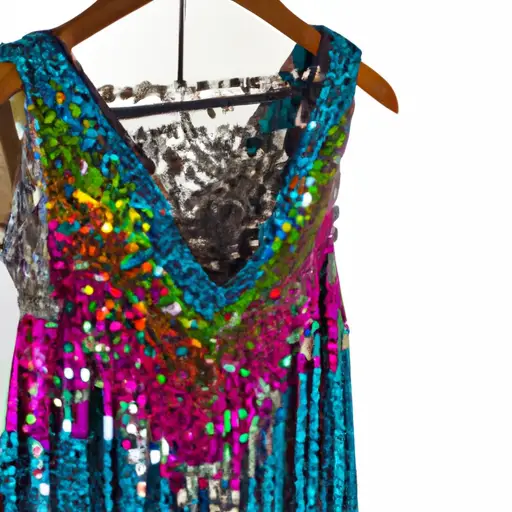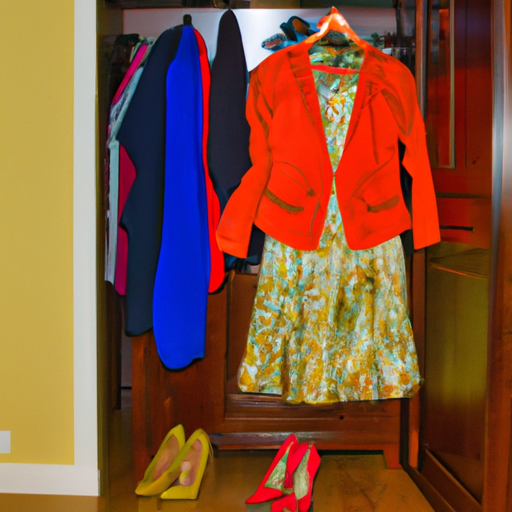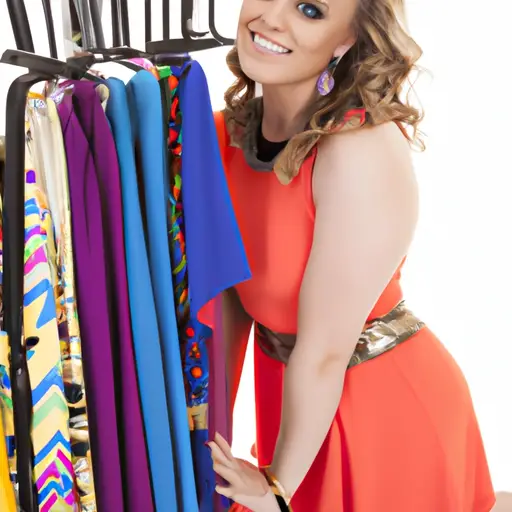Shopping Ethically and Sustainably
Hey there, let’s dive into the world of ethical and sustainable shopping!
So, what exactly do we mean by ethical and sustainable shopping? Well, it’s all about making conscious choices when we buy products, considering their impact on the environment and people. The goal of this post? To give you some expert advice on how to shop in a way that aligns with your values and helps create positive change. Get ready, because we’ve got lots to cover!
Researching Brands
Okay folks, when it comes to ethical and sustainable shopping, researching brands is a crucial step. Trust me, you don’t want to be fooled by greenwashing or end up supporting companies with shady practices. So, let’s dive into some tips on how to research brands like a pro.
First things first, why is researching brands so gosh darn important? Well, my friend, it’s the key to finding out if a brand truly aligns with your values. You want to make sure they walk the talk when it comes to ethical sourcing, fair labor practices, and environmental sustainability.
Now, let me share some strategies on how to conduct this brand investigation. Start off by digging into their website. Look for clear information on their supply chain, certifications, and any sustainability initiatives they have in place. Don’t just take their word for it though, cross-reference their claims with third-party sources like certifications databases or ethical fashion websites.
Another tip, my savvy shoppers, is to check out customer reviews and discussions. Look beyond the shiny marketing materials and see what real people are saying. Social media can be quite the treasure trove for this. You’ll likely find unfiltered opinions and experiences shared by people who’ve actually interacted with the brand.
And here’s a little secret: don’t forget to utilize good ol’ Google! Do a quick search of the brand’s name combined with keywords like “controversy” or “scandal.” This might bring up any previously hidden issues or ethical concerns that have been uncovered.
Lastly, don’t underestimate the power of community. Join online forums or engage in sustainable fashion communities where you can connect with like-minded individuals who have done their own research. They might be able to provide valuable insights or recommendations on brands that align with your values.
Remember, my fellow shoppers, researching brands is like putting on your detective hat to uncover the truth. By doing your due diligence, you’re making a conscious choice to support companies that truly care about people and the planet. So go ahead, get your research game on!
Shopping Locally – Supporting my Community While Being Sustainable
Hey there folks! Today, I want to talk about shopping locally and how it can make a big difference to our communities and the environment. When it comes to ethical and sustainable shopping, one of the best choices we can make is to shop locally. It’s all about supporting our neighbors and finding unique, high-quality products right in our own backyard. So, let’s dig in and explore the benefits of shopping locally and how we can make this a part of our everyday consumer habits!
The Perks of Shopping Locally
Shopping locally offers a bunch of awesome advantages. Firstly, it boosts the local economy. By spending our hard-earned money at small businesses in our area, we directly contribute to local jobs and help our community thrive. Plus, local stores often source their goods from nearby suppliers, reducing transportation emissions and the overall carbon footprint.
Secondly, local businesses often take pride in providing unique and handmade products. When I shop locally, I feel like I’m getting something special, not just another mass-produced item. Local artisans and entrepreneurs pour their heart and soul into their creations, resulting in high-quality, one-of-a-kind goods. It’s like finding hidden treasures while supporting the talented individuals behind them!
Tips for Shopping Locally
Now that we know how beneficial it is to shop locally, let’s chat about how we can incorporate this into our shopping routine. One great way is to start by exploring nearby farmers’ markets, craft fairs, or boutique stores. These places are often teeming with locally-made products, and we get to meet and chat with the people who make them!
Another tip is to actively seek out and support local businesses online. Many small shops have embraced e-commerce, making it easier to discover and purchase their products even if we can’t physically visit their store. So, let’s bring up our favorite search engine and look for keywords like “local,” “handmade,” or “artisanal” followed by the specific item we’re interested in. You’d be surprised at what we can find just a few clicks away!
In conclusion, shopping locally is not only beneficial for our own communities but also for living a sustainable lifestyle. By supporting local businesses, we contribute to a stronger economy, reduce our carbon footprint, and gain access to unique and high-quality products. So, let’s make a conscious effort to shop locally whenever possible and become champions for our own neighborhoods!
Thrifting: Finding Hidden Treasures and Saving the Planet
Alright folks, let’s dive into the wonderful world of thrifting! This is by far one of my favorite ways to shop sustainably and snag some incredibly unique finds. Trust me, you won’t want to miss out on the benefits of thrifting. First off, not only does thrifting save you loads of money, but it’s also a fantastic way to reduce your environmental impact. By giving pre-loved garments a second life, you’re helping divert clothing from landfills and cutting down on the demand for new, resource-intensive production. Plus, thrift stores are treasure troves filled with one-of-a-kind vintage pieces, quirky accessories, and trendy items from different eras. It’s like going on a fashion adventure every time you step foot into a thrift store!
Now, let me clue you in on some insider tips for thrifting sustainably like a pro. First things first, always come prepared with an open mind and patience. Thrift stores can be a bit overwhelming, so allow yourself plenty of time to browse through the racks. Don’t go in with a specific item in mind, but rather keep an eye out for unique patterns, textures, or materials that catch your eye. It’s all about the thrill of the hunt!
Another handy tip is to explore different sections of the thrift store. Don’t limit yourself to just the clothing aisles. Check out the accessories section for statement jewelry or vintage handbags. Don’t forget about the home goods area, where you might stumble upon vintage decor or perfectly worn-in furniture. Thrift stores often have hidden treasures waiting for you in unexpected places!
Now, let’s talk about the importance of supporting independent brands while thrifting. Thrift stores often receive donations from local designers and small businesses, so you have the opportunity to discover and support emerging talent. By purchasing their items, you’re directly contributing to their success and fueling the growth of sustainable fashion. It’s a win-win situation – you get a unique piece while helping a small business thrive!
So, my fellow fashion enthusiasts, I hope you’re as excited as I am about the wonders of thrifting. Remember to embrace the thrill of the hunt, keep an open mind, and support those hidden gems of independent brands. Next time you’re on the lookout for new threads, skip the fast fashion and head straight to your local thrift store. You never know what treasures await you!
Supporting Independent Brands
Why supporting independent brands is crucial is because they bring uniqueness and diversity to the market. These brands often oomph in creativity and innovation, striving to stand out from the mainstream. By backing these independent brands, we are helping to foster a more vibrant and competitive marketplace.
So, how can we support these indie gems? First and foremost, word-of-mouth is key. Recommending these brands to friends, family, and anyone who will lend an ear can make a huge difference. Also, sharing their social media posts and leaving positive comments can help spread the word to a wider audience.
Another way to show support is by attending their pop-up shops, markets, and events. By physically showing up, we demonstrate our interest and appreciation for their products. Plus, these events are often a blast – full of exclusive deals, live music, and a chance to meet the faces behind the brand.
Let’s not forget the power of online shopping either. Many independent brands have their own websites or sell through online marketplaces, making it easy to shop from the comfort of our own homes. And be sure to leave reviews after making a purchase – it’s like a virtual high five to the brand!
Finally, don’t be afraid to splurge a little. Independent brands may have slightly higher price points due to smaller production quantities, quality materials, and ethical manufacturing practices. But investing in their products not only supports their growth but also ensures you’re getting a unique and often superior item that you won’t find in every chain store.
In conclusion, supporting independent brands is a win-win situation. By backing these creative and diverse businesses, we contribute to a more vibrant marketplace and often end up with one-of-a-kind products to cherish. So, let’s give these indies some love and watch them thrive!
6. Conclusion: Wrapping It Up!
Well folks, we’ve reached the end of this wild shopping journey! Let’s do a quick recap of the key takeaways before we part ways.
First and foremost, ethical and sustainable shopping is all about considering the impact of our purchases on the environment and society. It’s about making conscientious choices that align with our values.
Secondly, researching brands before making a purchase is crucial. Dig deep, delve into the nitty-gritty of their practices, and see if they walk the walk when it comes to sustainability and fair trade.
Don’t forget about the beauty of shopping locally! Supporting local businesses not only stimulates the local economy but also reduces our carbon footprint and strengthens our sense of community.
Ah, thrifting! The thrill of finding unique treasures while reducing waste is unparalleled. Embrace the thrill of the hunt and give pre-loved items a second chance to shine.
And of course, let’s not overlook the importance of supporting independent brands. These unsung heroes are often at the forefront of sustainable and ethical practices, so let’s give them the love and recognition they deserve.
Before we part ways, I want to leave you with a little challenge. The next time you need something, take a pause and think about the impact of your purchase. Can you make a more mindful choice? Can you support a brand that aligns with your values? Together, we can make a difference, one shopping trip at a time!
So, my friends, let’s shop smart, shop sustainably, and shop with a conscience. Together, we can create a better world for ourselves and future generations. Stay fierce, stay fashionable, and stay true to your ethical values!
Ethical Shopping FAQ
How can people shop ethically?
Shopping ethically and sustainably is something I’m passionate about. And let me tell you, it’s easier than you might think! First things first, I always make sure to do my research. I mean, who wants to support a company that doesn’t have ethical practices, right? So, I read up on a brand’s values and commitments, and check if they have any certifications like Fair Trade or Organic. That way, I know I’m making a positive impact with my purchase.
But wait, there’s more! I also keep an eye out for products that are environmentally friendly. Think about it: every time we make a purchase, we’re either contributing to pollution or supporting sustainable practices. So, I try my best to choose items made from recycled materials or that are biodegradable. It’s all about reducing waste and minimizing our carbon footprint, you know?
Another tip I have is to shop local. When we buy from local businesses, not only are we supporting our community, but we’re also minimizing the transportation required for goods to reach us. Plus, shopping locally often means getting high-quality products made with love and care. It’s a win-win if you ask me!
Oh boy, speaking of wins, I always keep an eye out for sales and discounts on ethical and sustainable products. I mean, who doesn’t love a good deal? By snagging these discounts, I can shop ethically without breaking the bank. Saving money and saving the planet? Count me in!
Now, let me get real with you for a moment. Shopping ethically and sustainably isn’t just about the products we buy. It’s also about what we don’t buy. Yup, you heard me right! I try to avoid unnecessary purchases and focus on essentials. This way, I’m not contributing to overconsumption and the negative impact it has on the environment. It’s about being thoughtful and mindful with our shopping habits, my friend.
So, there you have it, my not-so-secret tips for shopping ethically and sustainably. Remember, every purchase we make has the power to make a difference. So let’s shop with intention and choose products that align with our values. Together, we can create a better world, one shopping trip at a time!
What is one way to shop sustainably?
One way to shop sustainably is by embracing “thrifting.” I mean, come on, who doesn’t love a good thrift store treasure hunt? By buying secondhand clothing, you’re giving those pre-loved items a new lease on life and reducing the demand for new garments. Plus, you can find some seriously unique pieces that you won’t spot anywhere else. It’s like finding a needle in a haystack, but in a good way! So next time you need a new outfit, skip the mall and head to your local thrift store. Trust me, you won’t regret it!
What does it mean to shop ethically?
Shopping ethically means making choices that align with my values and beliefs about fair treatment of workers, environmental sustainability, and animal welfare. It involves considering the impact of my purchases on the world around me and making conscious decisions to support companies and products that prioritize these concerns. By shopping ethically, I can contribute to positive change and promote a more sustainable and just future.
When it comes to shopping ethically, there are a few key things I keep in mind. Firstly, I make an effort to research the brands and companies I buy from. This involves looking into their supply chains, labor practices, and environmental commitments. I seek out brands that promote fair wages, safe working conditions, and use sustainable materials and production methods. This way, I can be confident that my purchases are not supporting exploitative practices or contributing to environmental harm.
Additionally, I strive to prioritize quality over quantity. Instead of buying cheap, disposable items that will quickly find their way to the landfill, I invest in well-made, durable products that will last. This not only helps reduce waste but also saves me money in the long run. I also try to buy second-hand whenever possible. Not only does it give items a new lease on life, but it also reduces the demand for new production and the associated environmental impact.
When it comes to clothing, I aim to support sustainable fashion. This means opting for organic or recycled materials, as well as supporting brands that prioritize fair trade, provide transparency in their supply chains, and minimize waste in their production processes. I also love exploring vintage and thrift stores, as they offer unique and affordable fashion options while reducing the demand for new clothing production.
Lastly, I try to reduce my overall consumption. By only buying what I truly need and avoiding impulse purchases, I can decrease my personal impact on the environment and reduce the demand for unethical or unsustainable products. This also involves rethinking my mindset on ownership and embracing sharing and borrowing platforms, such as libraries or rental services, for items that I only need temporarily.
